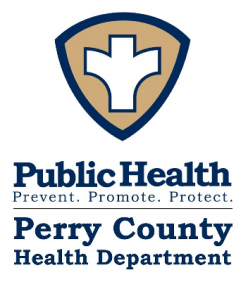Perry County Health Department
Perry County Health Department has been awarded a Child Injury Prevention grant through the Ohio Department of Health. The grant is funded from October 1, 2023-September 30, 2027. Haley Randolph is the grant coordinator and can be reached at 740-721-0860.
The Ohio Child Injury Prevention Program at the Ohio Department of Health is focused on preventable injuries for Ohioans ages 0-18 years related to occupant protection (car/booster seats, teen driving), concussions (related to sports and safe active transportation), child maltreatment and youth suicide.
- Every day in the United States, more than 28,000 youth ages 19 years and younger are injured seriously enough to require medical treatment in an emergency department, totaling more than 10 million annually.
- Each year in the United States, more than 17,000 youth ages 19 years and younger will die as a result of injury (22.5 per 100,000); more than 630 will die in Ohio (20.0 per 100,000).
- Injuries have been the leading cause of death in children for nearly 40 years.
- During the next year, one in four children will suffer an injury that will require medical attention.
- It is estimated that as many as 90 percent of unintentional injuries can be prevented.
Children are not small adults. They are developmentally, anatomically and physiologically different than adults. These differences place them at risk for injury and affect the severity of the injury.
Perry County
’
s Focus Areas include:
Child Passenger Safety
- Motor vehicle injuries are a leading cause of death for children. But many of these deaths can be prevented with the appropriate car seats, booster seats and seat belts.
- Car seat use reduces the risk of death to infants younger than age 1 by 71% and to toddlers 1 to 4-years-old by 54% in passenger vehicles.
- Booster seat use reduces the risk of serious injury by 45% for children 4-8 years old when compared with seat belt use alone
Youth Violence and Child Maltreatment-Preventing Adverse Childhood Experiences (ACE’s) and Promoting Positive Childhood Experiences (PCE’s)
Adverse childhood experiences, or ACEs, are potentially traumatic events that occur in childhood (0-17 years). For example:
- experiencing violence, abuse, or neglect
- witnessing violence in the home or community
- having a family member attempt or die by suicide
Also included are aspects of the child’s environment that can undermine their sense of safety, stability, and bonding, such as growing up in a household with:
- substance use problems
- mental health problems
- instability due to parental separation or household members being in jail or prison
- not having enough food to eat
- experiencing homelessness or unstable housing
- experiencing discrimination
ACEs are linked to chronic health problems, mental illness, and substance use problems in adolescence and adulthood. ACEs can also negatively impact education, job opportunities, and earning potential.
ACEs are common.
- About 64% of U.S. adults reported they had experienced at least one type of ACE before age 18, and nearly 1 in 6 (17.3%) reported they had experienced four or more types of ACEs
However, ACEs can be prevented. Creating and sustaining safe, stable, nurturing relationships and environments for all children and families can prevent ACEs and help all children reach their full potential.
